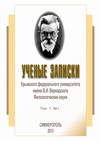The purpose of this article is to conduct a comparative study of non-verbal conflict behavior of representatives of English and Russian linguistic cultures who are participants in socio-political talk shows. Identification of means of paraverbal influence with maximum suggestive potential in conflict dialogues in English- and Russian-language political discourse. The paper analyzes nonverbal communicative means that implement dialogue-conflict, identifies and describes the gestural and prosodic components of nonverbal communication that accompany the course of dialogue-conflict in political communication. In order to comprehensively describe the paraverbal component of conflict dialogues, gestures were analyzed and classified, the frequency of their use by communicants was determined, prosodic means accompanying conflict communicative interaction were analyzed, and their parametric characteristics were described. The article also analyzes the lexical and syntactic component of utterances, the means of its prosodic and gestural design and the forms of their implementation in English- and Russian-language political discourse. Based on the data obtained, the general and differential characteristics of nonverbal behavior of communicants in dialogue-conflict at various levels of discursive activity, characteristic of representatives of English- and Russian-speaking linguistic cultures, realizing the maximum suggestive potential, are established.
non-verbal behavior, linguistic culture, communication, socio-political talk show.
1. Antipova A. M. Sistema angliyskoy rechevoy intonacii. – M.: Vysshaya shkola, 1981. – 120 s.
2. Bodalev A. A. Psihologiya mezhlichnostnogo obscheniya. – Ryazan': RVSh MVD RF, 1994. – 89 s.
3. Brodeckiy A. Ya. Vnerechevoe obschenie v zhizni i v iskusstve: Azbuka molchaniya. – M.: Vlados, 2000. – 192 s.
4. Vezhbickaya A. Yazyk. Kul'tura. Poznanie. – M.: Russkie slovari, 1997. – 513 s.
5. Ganina V.V. Emocii cheloveka i neverbal'noe povedenie: gendernyy aspekt. Ivanovo: Ivan. gos. un-t. –2006. – 208 s.
6. Duranov M. E. Pedagogicheskoe upravlenie obucheniem studentov kak sociokul'turnyy process. – Chelyabinsk: ChGAKI, 2003. – 121 s.
7. Kagan M. S. Mir obscheniya. Problema mezhsub'ektnyh otnosheniy. – M.: Politizdat, 1988. – 319 s.
8. Kartashkova F. I. Psihofiziologicheskie reakcii cheloveka i ih otrazhenie v angliyskom yazyke. – Ivanovo: Ivan. gos. un-t, 2015. – 108 s.
9. Kreydlin G.E. Neverbal'naya semiotika v ee sootnoshenie s verbal'noy: Avtoref diss. … kand. filol. nauk: 10.02.19. – M., 2000. – 385 s.
10. Kreydlin G.E. Neverbal'naya semiotika: Yazyk tela i estestvennyy yazyk. – M. : Novoe literaturnoe obozrenie, 2002. – 529 s.
11. Kreydlin G.E. Semiotika, ili Azbuka obscheniya: uchebnoe posobie. – M.: Flinta, Nauka, 2013. – 240 s.
12. Labunskaya V. A. Ne yazyk tela, a yazyk dushi! Psihologiya neverbal'nogo vyrazheniya lichnosti. – Rostov-na-Donu: Feniks, 2009. – 342 s.
13. Leontovich O.A. Vvedenie v mezhkul'turnuyu kommunikaciyu. – M. : Gnozis, 2007. – S. 26–34.
14. Maslova V.A. Lingvokul'turologiya. – M. : Akademiya, 2001. – 208 s.
15. Morozov V. P. Emocional'nyy sluh cheloveka // Zhurnal evolyucionnoy biohimii i fiziologii. –1985. – № 6. – S. 568–577.
16. Mudrik A. V. Social'naya pedagogika: uchebnik dlya stud. uchrezhdeniy vyssh. prof. obrazovaniya. – M.: Akademiya, 2013. – 240 s.
17. Postnikova L. V. Prosodiya i politicheskiy imidzh oratora (na materiale rechey amerikanskiy prezidentov): Avtoref diss. … kand. filol. nauk: 10.02.04. – M., 2003. – 198 s.
18. Prohorov Yu. E. Sternin I. A. Russkie: kommunikativnoe povedenie. – M. : Flinta, 2007. – 443 s.
19. Sokovnin V. M. O prirode chelovecheskogo obscheniya (opyt filosofskogo analiza). – Frunze: MEKTEP, 1973. – 234 s.
20. Stefanenko T. G. Etnopsihologiya. – M.: Aspekt Press, 2014. – 484 s.
21. Shagidevich A. S. Melodika kak odin iz komponentov prosodii pri izuchenii foneticheskih sredstv russkogo yazyka. – Naberezhnye Chelny: INEKA, 2009. – S. 83–84.
22. Aiello J. R. Human spatial behavior. Handbook of environmental psychology. – New York, 1987. –pp. 359–504.
23. Argyle M. Bodily Communication. – London: Routledge, 2013. – 363 p.
24. Argyle M., Dean J. Eye Contact, Distance and Affiliation // Social Encounters: Reading in Social Interaction. – Harmondsworth, 1976. pp. 289–304.
25. Birdwhistell R. Kinesics and Context: Essays on Body Motion and Communication. – Philadelphie: University of Pennsylvania Press, 1970. – 352 p.
26. Copeland L., Griggs J. Going international: how to make friends and deal effectively in the global marketplace. – New York: New American library, 1985. – 279 p.
27. Crystal D. Prosodic Systems and Intonation in English. – Cambridge: Cambridge University Press, 1969. – 381 p.
28. Ekman P., Friesen W.V. The repertoire of nonverbal behavior: categories, origins, usage and coding // Semiotica. – 1969. – pp. 49–98.
29. Hall E. T. Understanding Cultural Differences: Germans, French and Americans. – Intereultural Press, 1990. – 196 p.
30. Hall E. T. Beyond Culture. – New York: Anchor Books, 1989. – 256 p.
31. Kendon A. Gesticulation, Speech and the Gesture Theory of Language Origins // Sign Language Studies 9 – 1975. – pp. 349–373.
32. Laver J. Principles of Phonetics. – Cambridge: Cambridge University Press, 1994. – 541 p.
33. Mehrabian A. Nonverbal Communication. – Chicago, 1972. – 226 p.
34. Pease A. The Definitive Book of Body Language: The Hidden Meaning Behind People's Gestures and Expressions. – Buderim, 2004. – 386 p.
35. Stec K., Huiskes M., Wieling M., Redeker G. Multimodal character viewpoint in quoted dialogue sequences // A Journal of General Linguistics. – 2011. – pp. 1 – 19





